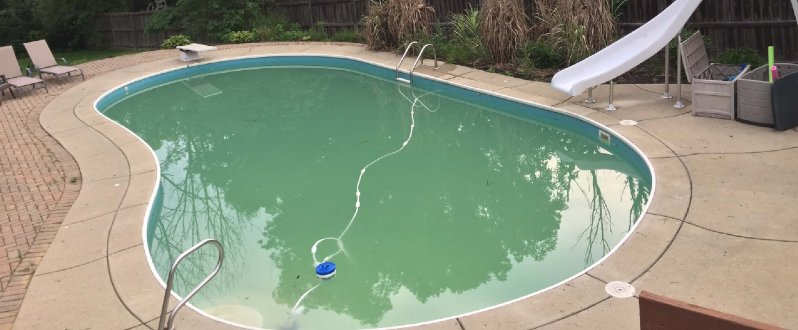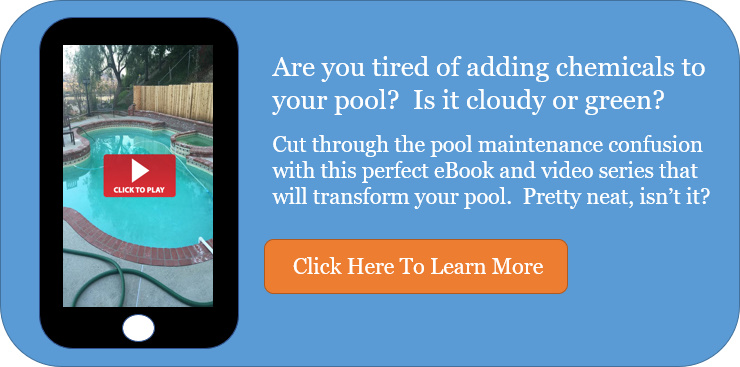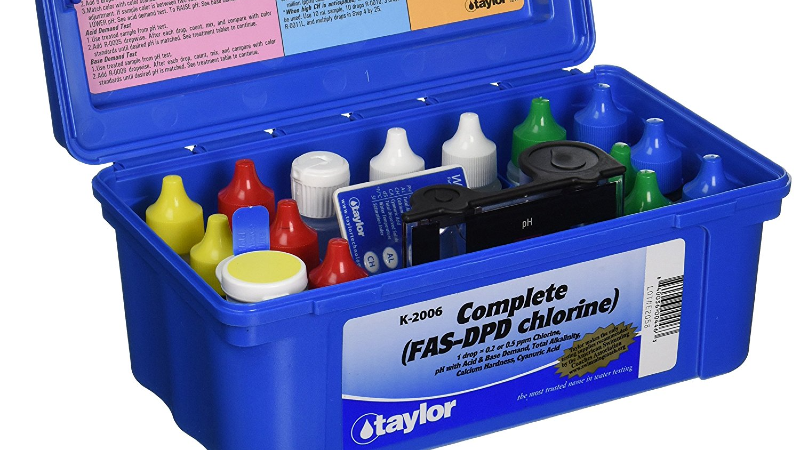- Home
- Troubleshooting
- Yellow Algae
Yellow Algae: How To Get Rid Of Mustard Algae In 9 Steps
Yellow mustard on hot dogs is great!! At least for me. But yellow algae doesn't belong in our pool. Does your pool want to ruin your weekend pool party? We're not going to let it, are we? Pool algae can be a pain and a hassle. But not to worry. You can learn to get rid of and control it.
What Is Yellow Algae?
Yellow algae, also known as mustard algae, and is a type of green algae. Yellow algae differs from other types of algae. Green algae can float on water, but yellow algae clings onto the bottom, pool walls, and every pool surface. Mustard algae can be a little resistant to lower levels of chlorine and can be challenging to remove if it gets a hold onto your pool.
Yellow algae can be found in all different climates, but it usually affects warmer areas such as here in Florida and pools in Arizona. It’s a member of a microbe family and the biological classification is Eukaryota / Heterokonta / Ochrophyta / Xanthophytes.
Unlike brown algae and black algae, mustard algae can be easily brushed away, but it will return if the proper steps are not taken.

How Did My Pool Get Yellow Algae?
For yellow algae to grow, the right conditions must be present in your pool. This includes warm water temperature and low levels of chlorine. The problem with mustard algae is it can infect pools that are perfectly balanced and maintained. Heavy pollen and organic debris such as grass clippings or a large load of leaves can also contribute to yellow algae growth.
How To Kill Yellow Algae
With a few simple steps, you'll be swimming in no time.
1. Balance Out The Chemicals
Before trying to remove your pool algae problem, bring the pH, alkalinity, and hardness into line. The pH should be 7.0 - 7.2, alkalinity between 80 - 120 ppm, and hardness is 150 - 250 ppm. You need to know what your chemical readings are before you begin. I use and recommend the Taylor K-2006 pool test kit.
2. Scoop It Out
Purchase a high quality leaf rake, (not a simple blue square skimmer) and scoop out as much debris from the bottom and top of the pool as you can. If you're able, make sure the bottom drain is clear and free of debris. You want all the chlorine to kill the mustard algae growth and not be used up by anything else.
3. Clean Everything
Next is to remove as much out of your pool as possible which includes pool accessories like toys, floats, and ladders. This includes your leaf rake and brush. Give everything a good scrubbing with a solution 1:1 mixture of bleach and water and a soft bristle brush. Make sure to wash your bathing suits as well.
3. Backwash Your Filter
We'll never clean dirty water with a dirty pool filter, so let's get the pool filter backwashed and ready to go. If you have a cartridge filter, clean it well and reinstall it. A dedicated filter cleaner is perfect for this procedure. If your cartridge is old or has more than 3,000 filer hours, you'll need to replace it.
4. Sweep Your Pool Very Well
Give your pool a good sweeping with a quality nylon pool brush. This includes steps, behind ladders, pool walls, floor, and everything in between. Yellow algae can hide in the strangest places, so sweep every nook and cranny.
5. Shock Your Pool
And now it's time for chlorine, and lots of it. Super-chlorinate, or shock, the pool by maintaining the FC level to 20 ppm. You must do this in order to kill the algae. Don’t skimp on the pool shock treatment. I suggest using liquid pool chlorine instead of granular chlorine, a.k.a. Calcium Hypochlorite, to shock your pool. You will want to maintain a high FC level of 20 ppm for at least 24 hours after the water clears.
6. Brush Your Pool Again
Brush and sweep and sweep and brush. You want the mustard algae to be in the water so it can get filtered out.
7. Clean The Filter Again
A clean filter equals clean water, so let's backwash one more time. If you have a DE filter, you'll need to re-coat or recharge the grids with each backwash. If you have a cartridge filter, remember to take the filter out and clean it once per day with a regular garden hose, never a power washer.
8. Shock Your Pool Again
The chlorine level may have decreased, so we're going to increase back to 20 ppm.
9. Balance Your Chemicals
You've added gallons of chlorine and your pool chemistry might be a bit off. Grab your Taylor K-2006 kit, test the water, and rebalance the chemicals. Your chlorine might still be high, but no worries. It will decrease in a few days.
How To Prevent Mustard Algae
Getting rid of mustard algae is the hard part. Keeping it away is the easy part. With just a few easy steps, you'll be mustard free.
- Test your water chemistry: Maintain your pH, alkalinity and sanitizer levels in the correct range.
- Keep the filter clean: Backwash and clean your filter when needed.
- Brush and vacuum: Stay on target and keep to a good pool maintenance schedule. Sweep and vacuum your pool on a routine basis.
- Clean it all: Make sure you properly clean all pool toys and wash your swim suits in hot water and dry them in your clothes dryer.
Over the next couple of weeks, keep an eye out for more yellow algae. Chances are you did a good job, but one never knows.
Be A Yellow Algae Terminator
With the proper pool care and testing your water on a regular basis, you'll terminate yellow algae for good. Then you can get back to the fun part, and that's swimming.
Common Yellow Algae FAQ
Below you'll find answers to common mustard and yellow algae questions.
Can my salt water pool get yellow algae?
Yes, virtually any pool can get algae. Proper chemistry and a good working filter can go a long way in preventing it.
What is the best algaecide for mustard algae?
The best algaecide you can use will be a PolyQuat 60 algaecide. Try to not use copper or any metal based algaecides, especially if you fill your pool with well water.
Should I drain my pool to get rid of algae?
Draining your pool is really a last resort. There are certainly better and less expensive ways to handle your pool algae.
Does a pool shock treatment kill algae?
Yes, properly shocking your pool will kill algae.
What Others Have Said
Click below to see contributions from other visitors to this page...
Correct Test Readings With High FC Levels 




I use the TF-100 test kit. Readings are FC-16, PH-7..5, TA-100, CH-220 and CYA-40. 16,000 gal. White plaster pool in full sun.
Problem is I'm using …
Recurring Mustard Algae And Fed Up! 




We are renting a house with an 10,000 gallon in ground saltwater pool with a cartridge filter. For the third time in a little over a year we have mustard …
Fine Powdery Yellow/Light Brown Substance..Algae Problems 




I have trouble keeping my in-ground pool clean. There is a very fine powdery yellow / light brown substance I can't vacuum out. Chlorine / pH levels are …

